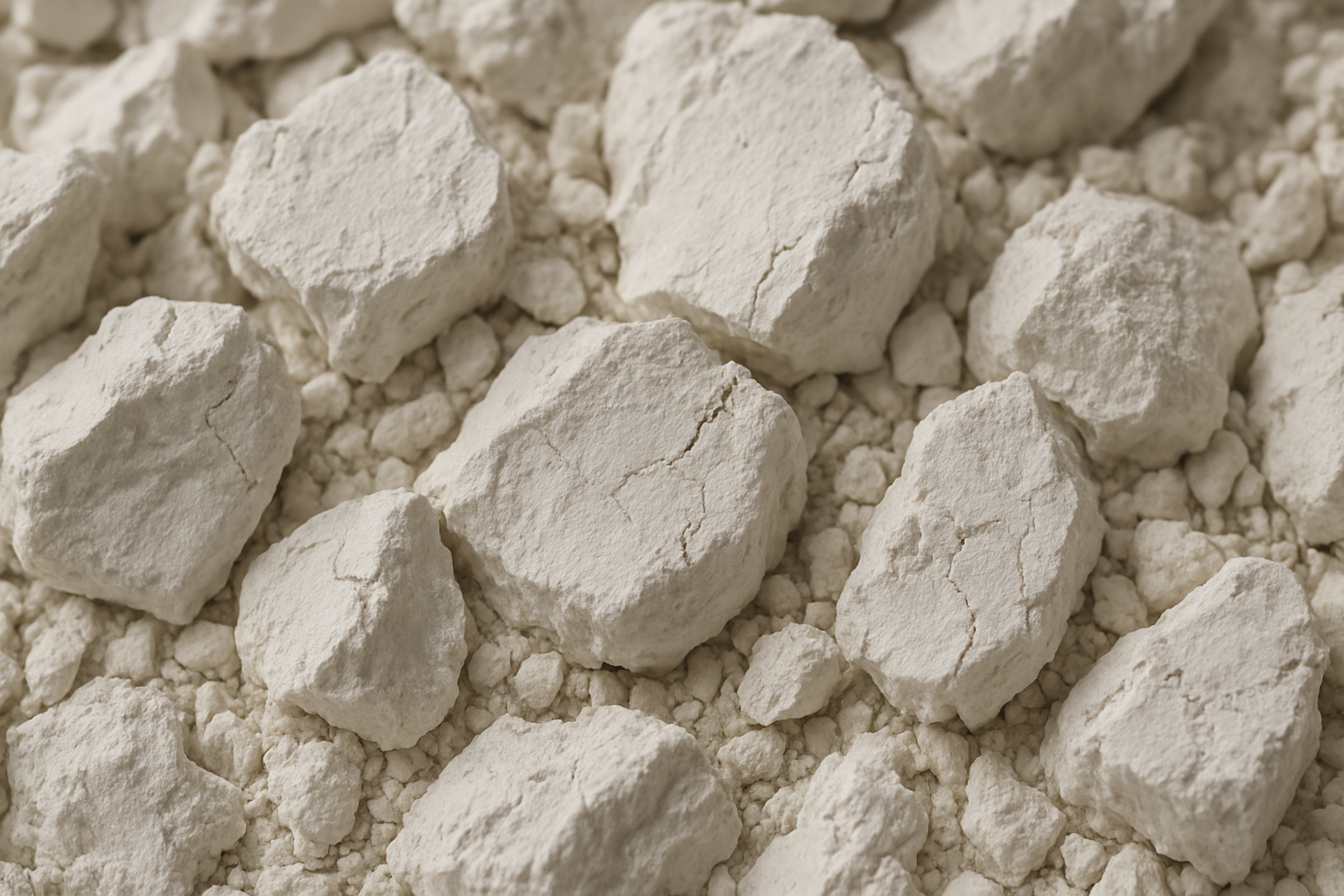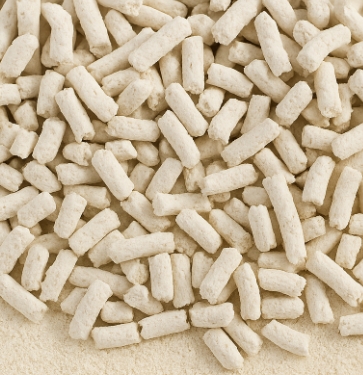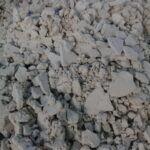Kaolin: A Versatile Industrial Mineral for Global Manufacturing
Kaolin is a soft white clay used in paper, ceramics, paint, and cosmetics. It’s valued for its smooth texture, whiteness, and safe chemical properties in many industries.

What is Kaolin?
Kaolin, also known as china clay, is a soft white clay mineral primarily composed of kaolinite (Al₂Si₂O₅(OH)₄). It is formed through the natural weathering of feldspar-rich rocks, especially granite. Due to its fine texture, chemical inertness, and whiteness, kaolin is widely used in various industrial applications.
Noodle Kaolin

The term "kaolin noodle" is used because the material is shaped in long, extruded strands—similar to noodles—during processing. However, in reality, the shape is often irregular, crumbled, or fragmented, which makes it look more like sprinkles or shredded pieces (similar to "mises").
The name "noodle" doesn’t refer to the final visual appearance but rather:
The extrusion process where wet kaolin is pushed out into noodle-like shapes.
-
The need to distinguish it from other forms like kaolin cake or powder.
So even though it may not look exactly like food noodles, the industry still calls it "kaolin noodle" due to how it is formed during production.
Kaolin Filter Cake (Abu Kaolin Cake)

""Abu Kaolin Cake" (also known as kaolin filter cake) does not actually contain ash in the sense of burnt residue. The term “abu” (ash in Indonesian) most likely refers to:
Its grayish appearance due to moisture and trace minerals, or
-
A local naming convention to distinguish it from other kaolin forms like noodle or powder.
Functions and Uses of Abu Kaolin Cake:
1) Ceramic and Porcelain Industry
- Its wet form is ideal for direct mixing in ceramic production.
2) Paper Industry
- Used as a coating clay to enhance surface smoothness and brightness.
3) Paints and Coatings
- Serves as a filler and helps control paint viscosity.
4) Rubber and Plastics
- Acts as an additive to improve strength and dimensional stability.
5) Cosmetics and Pharmaceuticals
- Commonly used in face masks or topical products due to its oil-absorbing and skin-safe properties.
Since it is still moist and compact, kaolin cake is best suited for manufacturers with drying or further processing capabilities.
Key Properties and Benefits of Kaolin
High Whiteness – Ideal for ceramics, paper, and paints
-
Chemical Inertness – Safe and non-reactive in most formulations
-
Fine Particle Size – Excellent filler and coating material
-
High Plasticity – Enhances workability in ceramics and rubber
-
Absorbency – Used in cosmetics and pharmaceuticals
Uses and Applications of Kaolin
Paper Industry
Used as a filler and coating to improve brightness, smoothness, and printability.-
Ceramics
A key ingredient in porcelain, tiles, and sanitary ware due to its plasticity and firing properties. -
Paints and Coatings
Acts as a pigment extender and enhances texture and coverage. -
Rubber and Plastics
Used as a functional filler to improve strength and durability. -
Cosmetics & Personal Care
Common in facial masks and powders due to its absorbent and non-toxic nature. -
Pharmaceuticals
Used as an anti-diarrheal and carrier for medicinal substances.
Kaolin Derivative Products
- Calcined Kaolin – Heat-treated kaolin for enhanced whiteness and performance in paints and plastics.
-
Spray-Dried Kaolin – Free-flowing powder for ease of handling and blending.
-
Metakaolin – Dehydroxylated kaolin used in high-performance concrete and as a pozzolanic material.
Kaolin Derivative Products
Top Users: China, India, Japan, South Korea, Germany, United States, and Brazil.
-
Importers: Countries with advanced ceramics, paper, paint, and cosmetics industries.
-
Exporters: Indonesia, China, USA, UK, and Brazil.








